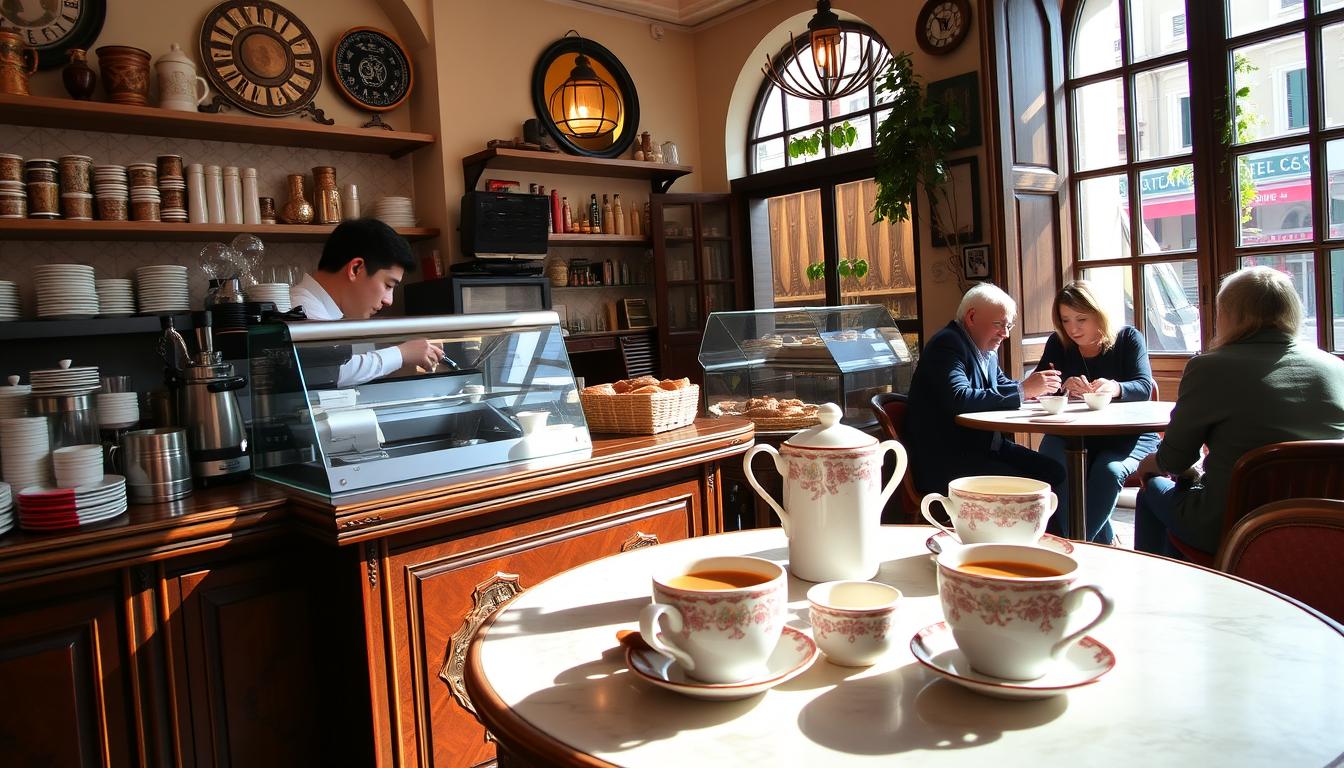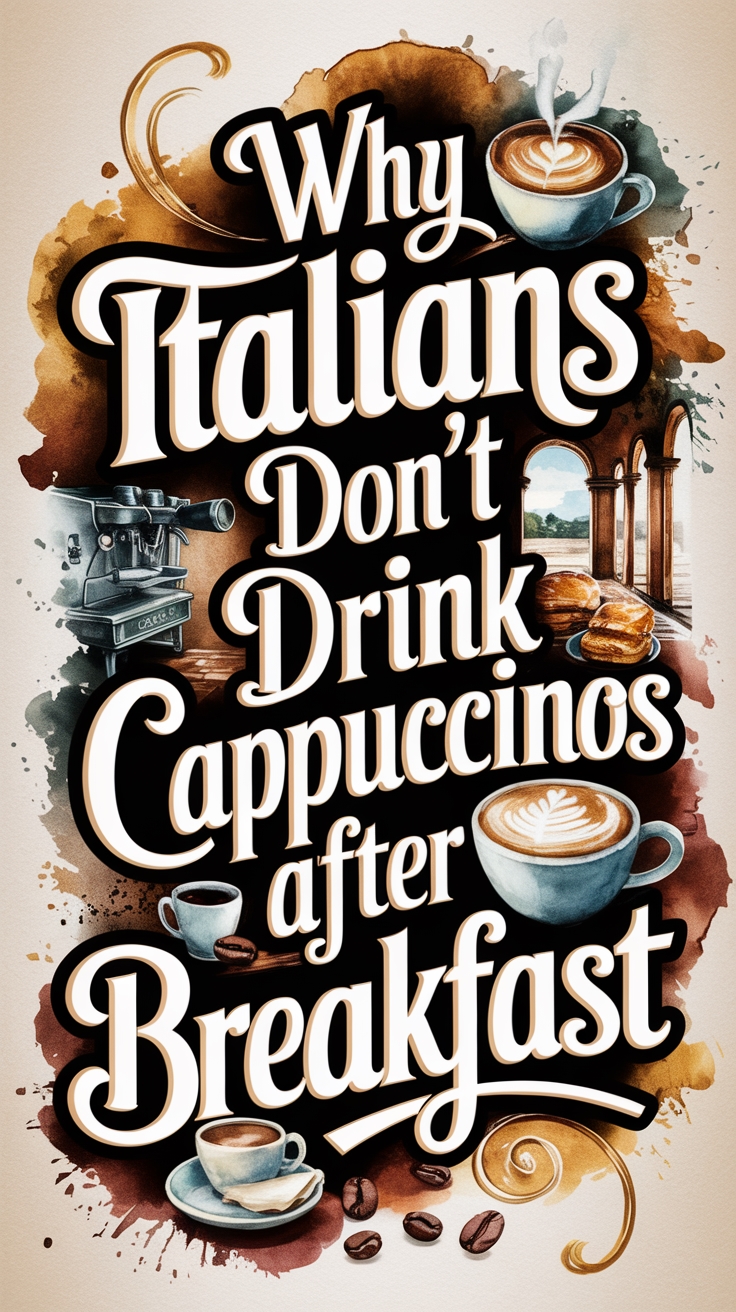Explore the rich world of Italian coffee culture. Here, morning coffee is more than a drink—it’s a lifestyle. In Italy, 90% of people enjoy cappuccinos only before 11 am. This tradition is rooted in both culture and digestion.
Italian coffee culture is all about balance. The cappuccino is not just a drink. It’s a morning ritual that combines taste, nutrition, and social norms. An Italian breakfast, with 200-300 calories, often includes a cappuccino, making it a mini-meal.
In Italy, coffee rules are based on both body and culture. A big 70% of Italians feel uneasy with milk-heavy drinks after lunch. This shows a shared belief in what’s good for digestion and manners.
Key Takeaways
- Cappuccino is strictly a morning drink in Italian culture
- 90% of Italians consume cappuccino before 11 am
- The drink is considered comparable to a light breakfast
- Milk-based beverages are avoided after lunch by most Italians
- Cultural and digestive norms shape coffee consumption patterns
The Italian Coffee Culture
Italian coffee culture is deeply rooted in tradition. It started in the 17th century when coffee came to Europe. Italians have made coffee an art, with their own unique way of enjoying it.
Cafés like Caffé Greco, opened in 1760, are more than just places to drink coffee. They are where people meet and share stories. Italians see coffee as a performance, with strict rules for how it’s made and enjoyed.
Espresso is at the core of Italian coffee culture. It’s not just about the beans, but how it’s brewed. The University of Coffee in Trieste teaches the “5 M’s” of making perfect espresso.
Drinking coffee at a bar is a social act in Italy. Most prefer quick espresso shots. It’s about connecting with others, being brief, and following cultural traditions.
Understanding the Cappuccino Tradition
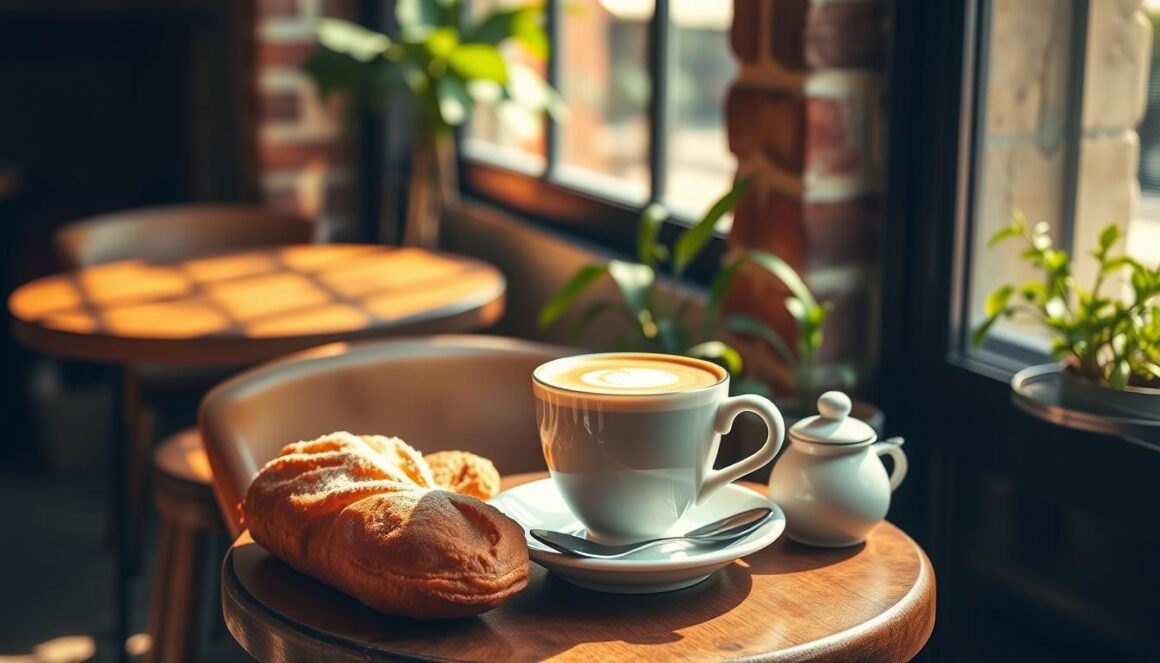
Cappuccino is a key part of Italian breakfasts. It has deep roots in Italian culture. It’s more than a drink; it’s a tradition.
The cappuccino is made with espresso, steamed milk, and foam. It fills a 180ml cup. Its creamy texture is perfect for starting the day.
Its high milk content makes it calorie-rich. Italians believe it can upset digestion if drunk too late. So, they enjoy it only in the morning.
While there are regional differences, the tradition stays the same. Cities like Turin and Trieste keep the morning coffee culture alive. After 11 AM, they prefer lighter coffees.
This tradition shows the strong link between food, time, and culture in Italy. It’s not just about what they eat; it’s about when and why.
Dietary Reasons for Morning Cappuccinos
Italian coffee rituals are deeply rooted in dietary traditions. They shape when and how cappuccinos are consumed. The morning cappuccino balances the light breakfast with a rich, creamy drink. About 90% of cappuccino consumption happens before 11 am, showing a precise cultural approach to morning nutrition.
Italians don’t drink cappuccinos after breakfast due to dietary beliefs. The milk-heavy nature of cappuccinos is seen as too substantial for post-morning meals. Around 70% of Italians avoid cappuccinos after breakfast, seeing them as a complete meal.
Digestive considerations are key in this practice. Italian culinary wisdom says heavy milk-based drinks can hinder digestion, after big lunches or dinners. The average Italian breakfast is small and sweet. This makes the morning cappuccino a perfect nutritional companion, providing both sustenance and satisfaction.
Nutritional science backs some of these cultural practices. About 80% of adults lack the enzyme to fully metabolize milk, causing digestive discomfort after meals. This biological factor supports the Italian preference for enjoying cappuccinos only in the morning.
Understanding these dietary nuances shows that Italian coffee culture is more than just a drink. It’s a carefully considered nutritional ritual, reflecting generations of culinary wisdom and bodily awareness.
Social Norms Around Coffee Consumption
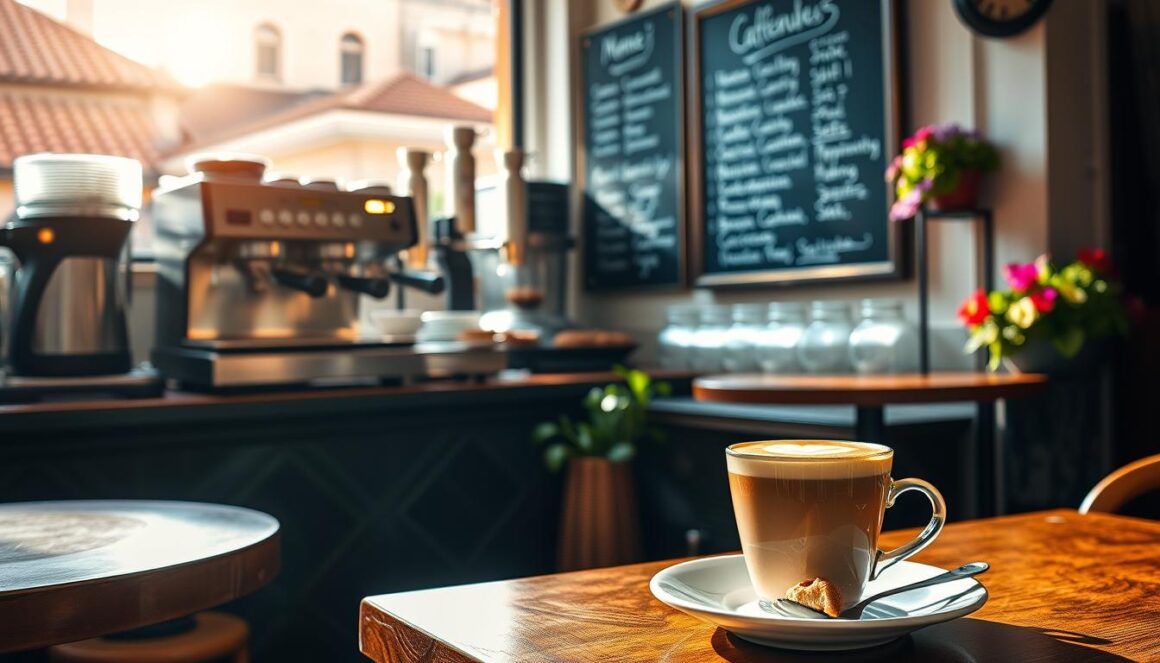
In Italy, knowing how to order coffee is key. The rules of Italian coffee culture might surprise you. When you walk into a traditional café, you’ll see that ordering is an art.
Locals have their favorite times for coffee. If you prefer something milder, ask for a caffè macchiato. It’s espresso with a bit of steamed milk. For a sweet treat, try a marocchino, which has chocolate and milk.
How you pay for your coffee is also important. Most places want cash, and exact change is best. Espresso usually costs about 1 euro. Anything more is seen as too expensive. Some bars even let you pay after you’ve enjoyed your drink.
Summer brings cool drinks like shakerato and caffè freddo. In the south, you might find granita di caffè. It’s like a tiny frappuccino with whipped cream on top.
To truly enjoy Italian coffee, watch and learn from the locals. Stand at the bar, drink your espresso fast, and know that milk-based drinks are for quick sips. These are the secrets to a real Italian coffee experience.
Historical Roots of the Practice
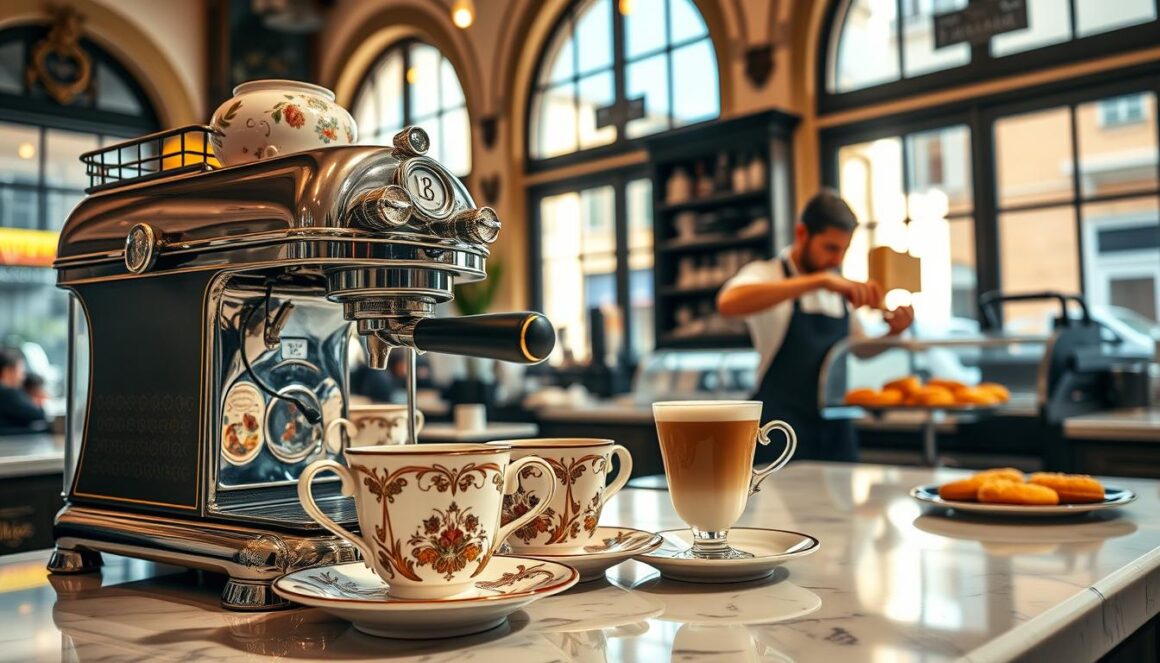
The history of morning coffee in Italy goes back centuries. It’s deeply tied to the country’s culinary traditions. The story of cappuccino starts with the Capuchin monks of the 16th century. Their brown robes inspired the drink’s name, “cappuccio,” meaning hood.
Italian coffee rituals began with manual workers needing a quick energy boost. In the early 20th century, they’d stop at cafes for a cappuccino and pastry before work. This became a key part of Italian social life, lasting for generations.
The cappuccino we love today came in the 1950s with new espresso machines. These machines made it easy to mix espresso, steamed milk, and foam. This perfect blend is what makes the cappuccino so special.
Café Greco, opened in 1760 in Rome, shows Italy’s long coffee culture. These cafes were places where people would meet, talk, and enjoy the morning coffee tradition. It’s a big part of Italian social life today.
Conclusion: Why Italians Don’t Drink Cappuccinos After Breakfast
The Italian coffee culture is a mix of tradition, diet, and social norms. It shows why cappuccinos are only for the morning. Even though 69% of Italians say cappuccinos can be drunk at any time, they stick to their morning routine.
It’s not just a matter of taste. Only 35% of adults can digest lactose well. This makes the afternoon a “grey area” for cappuccinos. It shows the complex way Italians view this beloved drink.
There are also regional differences in coffee habits. In the north, people drink cappuccinos in the afternoon, but only in winter. In the south, it’s strictly a morning drink. Yet, the main idea is clear: cappuccinos are for breakfast, showing the heart of Italian food culture.
For those who love coffee, it’s important to respect these traditions. Even though younger people might not follow these rules, traditional cafes do. The beauty of Italian coffee culture is in its long-standing traditions and the shared values that go beyond just drinking coffee.
FAQ
Why do Italians avoid drinking cappuccinos after breakfast?
In Italy, cappuccinos are for the morning because they have a lot of milk. People think drinking milk after eating can mess with digestion. They also think it’s too many calories for later in the day.
This belief comes from old ideas about how drinks affect digestion at different times.
What can I order instead of a cappuccino after breakfast?
After breakfast, Italians usually choose an espresso or a caffè macchiato. These are lighter and better for the afternoon or evening. If you want something with milk, a small caffè macchiato is a good choice.
Is drinking a cappuccino after breakfast a strict rule in Italy?
It’s a big tradition, but not a hard rule. Some modern Italians, and those in tourist areas, are more open. But in old cafes and with older people, it’s a big deal.
Locals might look at you funny if you order a cappuccino after morning.
What constitutes a traditional Italian breakfast?
A traditional Italian breakfast is a cappuccino or caffè latte with a cornetto or light pastry. The milk-based coffee is key, giving caffeine and nutrition for the morning.
How do Italians view milk consumption throughout the day?
In Italy, milk is for the morning. They think too much milk after breakfast is hard on the stomach. This is why they prefer black or very little milk coffees later.
Can tourists order a cappuccino whenever they want in Italy?
Most cafes will serve you a cappuccino anytime, but locals might look at you. Tourists are usually okay, but trying local customs is nice. Switch to espresso or a macchiato after breakfast to fit in.
What’s the scientific reasoning behind avoiding milk after meals?
The Italian belief isn’t strictly scientific. It’s based on old ideas about digestion. They think milk is heavy and can slow digestion, which is why they avoid it after meals.
This tradition has been passed down for generations, shaping their coffee and meal habits.

